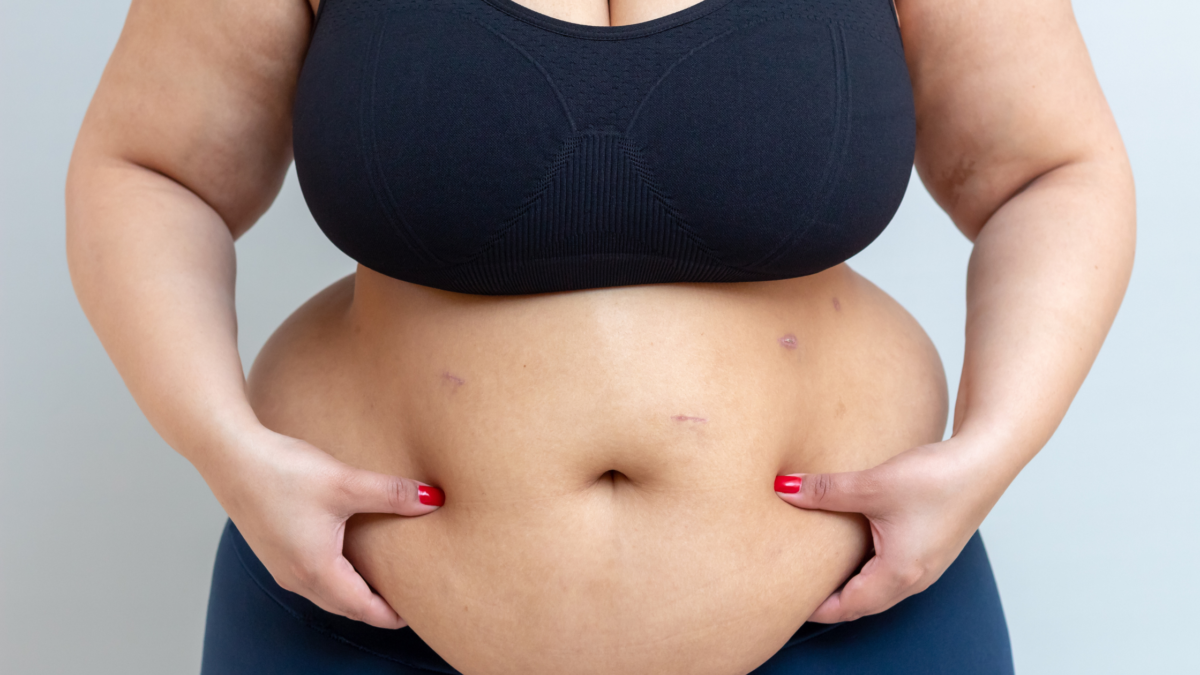


Medically Reviewed By Margaret Etudo. Written By The Vitamins For Woman Team.
Struggling with belly fat that just won’t budge? This article explores 32 powerful foods that help burn stubborn abdominal fat by boosting metabolism, balancing hormones, and reducing bloating.

Have you been struggling to lose belly fat, and it just looks like all your efforts have been futile? You’ve come to the right place because we understand your struggle. Belly fat has a reputation for being stubborn, and honestly, it lives up to that reputation. It is one of the most talked-about health concerns for a reason.
Why? Excess fat around the midsection, especially the deeper kind that surrounds your organs, is linked to severe health conditions, including but not limited to cardiovascular diseases, hypertension, and type-2 diabetes.
You may have tried cutting calories or increasing your workouts, only to find that your belly fat is the last to go. This is because abdominal fat is influenced by more than just diet and exercise. It concerns hormones, genetics, stress, and even poor sleep, which in turn affect how fat is stored and burned.
In this blog, we will help you understand the role food plays in losing belly fat. The better your understanding of the nutritional value of the foods you eat and what to eat and what to avoid, the better your chances of getting rid of that belly fat.
There are two main types of fat stored around the abdomen: subcutaneous fat and visceral fat.
Subcutaneous Fat | Visceral Fat |
This is the soft layer you can touch or even hold just beneath your skin. It cushions your body and stores energy, and while it can be frustrating, it is generally less harmful. When you talk about losing weight or gaining a little extra fat, you’re often talking about subcutaneous fat. It’s what is obvious enough to be seen and touched. | On the other hand, this fat sits deep within your abdomen and wraps around your internal organs. This type of fat is far more metabolically active. It poses too many health risks as it contributes to chronic inflammation and is also strongly linked to insulin resistance, high blood pressure, type 2 diabetes, and an increased risk of heart disease. |
If you have a family history of central obesity, your body may naturally hold onto fat in this area more easily. So far, scientists have linked more than 500 genes to overweight and obesity.
These genes can influence everything from how hungry you feel, how full you get after eating, how quickly you burn calories, to what kinds of foods you crave and where your body tends to store fat.
The influence of genetics isn’t the same for everyone. In some people, genes might only explain about 40% of their tendency to gain weight. That number could climb as high as 70 to 80% in others.
Understanding how much of a role your genes might play doesn’t give you an excuse; it gives you a more precise starting point. It helps you make more informed choices.
Hormones act as the body’s chemical messengers, guiding everything from appetite to how we store and burn fat. They play a bigger role than most people realise when it comes to belly fat.
Key hormones like stress hormones, leptin, insulin, sex hormones, and growth hormones help regulate hunger, metabolism, and where fat is distributed across the body.
If you’re struggling with severe belly fat, it means these hormones are most likely out of balance. That imbalance can slow down metabolism, increase appetite, and trigger excess fat storage, particularly around the abdomen.
Too little movement and too much screen time lead to fat storage, especially around the belly. To support muscle and metabolism, adults need at least 150 minutes of aerobic activity each week and two sessions of strength training. Children need at least an hour of movement daily to stay healthy.
On the diet side, it is about what you eat. Consistently consuming more calories than your body uses leads to fat gain, particularly when those calories come from saturated fat or added sugar.
Try to keep both under 10 per cent of your daily intake. Eating 2,000 calories a day means no more than 22 grams of saturated fat or 50 grams of added sugar.
Protein is one of the most valuable nutrients you can rely on to burn belly fat fast. It helps preserve lean muscle mass during weight loss, which is essential because muscle is metabolically active.
It burns calories even when you’re resting. Protein also keeps you full longer and reduces the likelihood of overeating, thanks to its effect on appetite-regulating hormones. This adds up to one simple truth: Diets rich in quality protein support real, sustainable fat loss.
High protein foods that burn belly fat fast include:
Not all carbs are equal. High-fibre, low-glycaemic carbohydrates are digested slowly, which helps regulate blood sugar, prevent insulin spikes, and reduce cravings. Fibre, in particular, promotes satiety and reduces calorie intake without restrictive eating.
It also improves gut health, lowers inflammation, and may help specifically reduce visceral fat, the dangerous fat stored around internal organs. Incorporating these complex carbs into your meals supports sustained energy and long-term fat loss.
High-Fibre Foods include:
Healthy fats are often misunderstood in the context of fat loss, because people think, “I am trying to lose fat, why eat more fat? What you don’t know is that the right types of fats can support your fat loss journey.
Monounsaturated and polyunsaturated fats help regulate hormones that influence fat storage, especially insulin and leptin. They also increase satiety, improve nutrient absorption, and reduce inflammation.
Healthy fat foods that come in handy here are:
The body’s ability to burn fat is heavily influenced by inflammation and metabolic rate. Thermogenic foods slightly raise your body temperature during digestion, increasing energy expenditure.
Anti-inflammatory foods, on the other hand, help reduce chronic inflammation that makes belly fat more difficult to shift, especially visceral fat. Together, these foods help improve how your body stores and uses energy.
Here are thermogenic and anti-Inflammatory foods to consider in your diet:
When your gut is in good shape, your body will likely let go of excess fat. A healthy gut does more than support digestion; it directly affects how your body stores and burns fat.
An imbalance in gut bacteria, known as dysbiosis, is linked to increased abdominal fat, insulin resistance, and inflammation. Probiotic-rich foods introduce beneficial bacteria that improve gut function, regulate hormones related to hunger and metabolism, and support more efficient nutrient absorption.
Probiotic and gut-friendly foods to include in your diet are:
Fruits and vegetables are naturally low in calories and high in fibre, water, vitamins, and antioxidants, all of which support fat metabolism and help reduce belly bloating. Their high nutrient density delivers many health benefits without tipping your calorie balance.
Many also contain compounds that reduce inflammation and support hormone balance, making it easier for the body to break down stored fat, especially visceral fat around the waist.
Nutrient-Dense Fruits and Vegetables Foods to include:
Now that you know the foods, how do you incorporate them into your diet? Well, not occasionally, not randomly, but with a bit of structure that gives room for flexibility. They work best when they become a natural part of your routine. Here’s how to do just that.
Foods high in protein, fibre, and healthy fats such as eggs, salmon, oats, avocados, and green tea can help burn belly fat by boosting metabolism and reducing cravings.
No single food will magically melt belly fat. However, consistently eating the right foods while maintaining a healthy lifestyle with exercise, good sleep, and stress management can significantly reduce belly fat over time.
Most people start noticing changes in 4 to 8 weeks when they combine fat-burning foods with regular physical activity and healthy habits. Results vary depending on consistency, genetics, and overall diet.
You don’t need gimmicks to lose belly fat. You need clarity on how your body stores fat, how nutrition affects it, and which foods support it.The 32 foods we’ve covered do not promise overnight results. They work because they support your metabolism, regulate hormones, and help reduce the fat that sits deep in the belly and affects your health.
Create a balanced diet that you can use consistently. Pair it with smart movement, better sleep, and hydration. Most importantly, build meals you can repeat, not just admire.

medically reviewed by margaret etudo, BPharm. written by the vitamins for woman team.